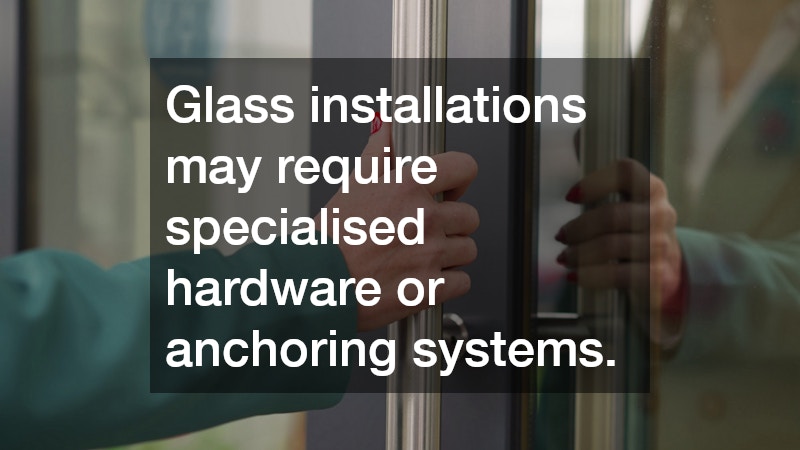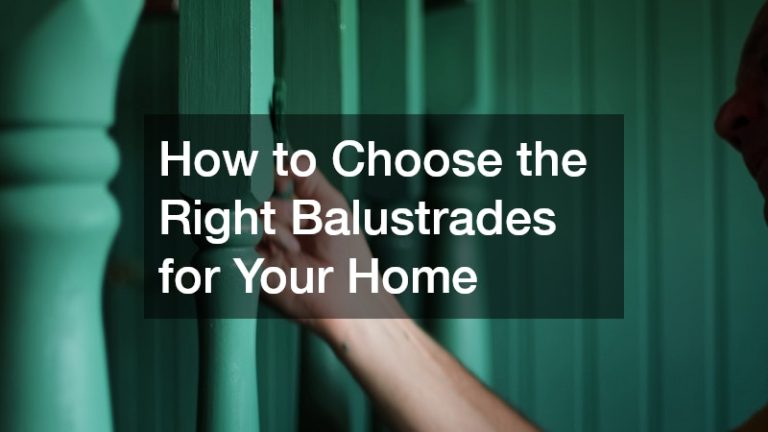Balustrades are a critical design and safety feature in any multi-storey home. Whether you are planning a new build or updating your current space, selecting the right balustrade system involves more than just aesthetics.
Balustrades provide essential fall protection for staircases, balconies and decks while contributing to the overall architectural appeal of your property.
The Role of Balustrades in Residential Construction
Balustrades are legally required on any raised platform with a drop of one metre or more. Their main purpose is to protect residents and visitors from falls, especially in high-traffic or elevated areas of the home.
Under the National Construction Code, balustrades must meet specific structural guidelines. They must be at least one metre high and able to withstand applied forces from people leaning or pushing against them. Any gaps between the components must be small enough to prevent children from slipping through or getting caught.
Compliance is non-negotiable. Failure to meet building standards can result in penalties or demands to make modifications. For this reason, it is vital to work with licensed tradespeople who understand the regulatory framework and can deliver work that satisfies both safety and aesthetic goals.
Selecting the Right Material
Choosing the appropriate material for your balustrade depends on your home’s style, environmental conditions and your personal preferences around upkeep. Each option brings its own set of strengths and considerations.
Glass balustrades create a modern, open feel and are often used in homes that prioritise views and natural light. They can be installed frameless or with subtle framing, allowing for an uninterrupted outlook. While sleek and elegant, glass requires regular cleaning and may show fingerprints or smudges more readily.
Stainless steel is another strong choice for contemporary homes. It is durable and resistant to corrosion, making it suitable for both indoor and outdoor applications. Its minimalist profile also makes it a favourite for modern architecture.
Timber balustrades provide a traditional and warm look. They suit heritage homes or properties with a rustic or coastal design. However, timber needs more maintenance, including sealing or painting, to protect against weathering and pests.
Aluminium offers a lightweight and low-maintenance option. It is particularly useful in outdoor areas where exposure to moisture is a concern. With powder-coated finishes available in various colours, aluminium can easily match existing home features.
Wrought iron delivers a timeless and often ornate style, making it a go-to material for classic or Victorian-era homes. It is durable but may require periodic rust prevention treatments depending on exposure.
Designing for Visual Harmony
Your balustrade should enhance the existing design of your home. It is not just a safety feature but also a visual element that can unify or disrupt the look of your space, depending on how well it is chosen.
Modern homes often feature glass or stainless steel balustrades with clean lines and minimal embellishment. These designs help maintain an open feel and complement neutral palettes or bold architectural statements.
Homes with traditional architecture benefit from materials like timber or wrought iron, where curved or detailed designs can reinforce the historical character of the building.
In coastal or scenic locations, glass balustrades are a common choice to preserve sightlines and natural views. In more industrial settings, steel cables or exposed metal designs may offer a better visual match.
When deciding on a design, consider how the balustrade will interact with your flooring, wall colours and overall layout. A cohesive design approach ensures the balustrade adds value and does not feel out of place.
Professional Installation Is Essential
Even the highest-quality balustrade will fail to deliver safety if installed incorrectly. This is why hiring licensed professionals is essential. Proper installation ensures your system is not only compliant but structurally sound and able to handle everyday use.
Before installation, your builder or contractor will assess structural support, take precise measurements and plan fixing points. Glass installations may require specialised hardware or anchoring systems, while timber or metal systems might involve more carpentry or welding work.
You should ask about timelines, any potential disruptions and post-installation inspections. Knowing what to expect helps you plan your renovation or build more effectively and ensures you meet all safety obligations.
Thinking Long Term
A well-installed balustrade should last many years and require only minimal maintenance if the right material is chosen. This makes it a worthwhile long-term investment in your home’s safety and appearance.
When selling a property, buyers will often take note of architectural details like balustrades. A stylish and compliant system can increase both visual appeal and perceived value. Conversely, outdated or poorly maintained balustrades may raise questions about the home’s general condition.
Where possible, request warranties from your supplier and ensure product specifications meet Australian standards. These details protect you from future repair costs and provide added assurance about the quality of the installation.
A Practical and Stylish Choice
Balustrades are more than just barriers—they are features that protect your household while adding design interest to staircases, balconies and terraces. Whether your priority is clear views, weather resistance or heritage charm, there is a material and design to suit your needs.
By understanding the functional requirements, choosing quality materials and working with experienced installers, you can select a balustrade solution that is both safe and stylish. This thoughtful approach not only enhances your living space but also contributes to the long-term value and appeal of your home.

